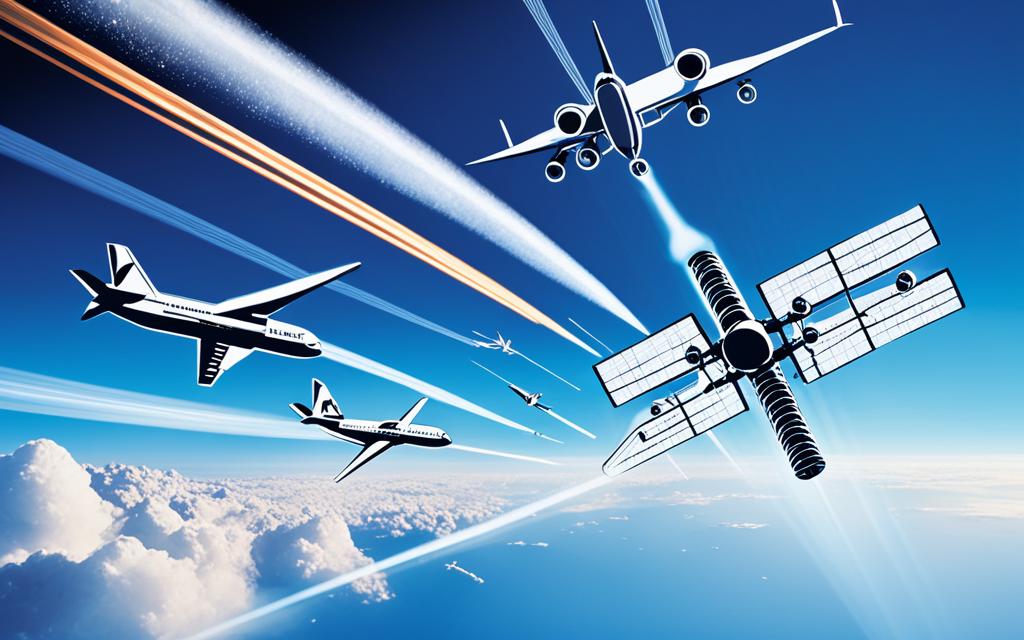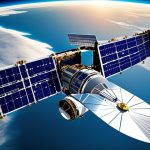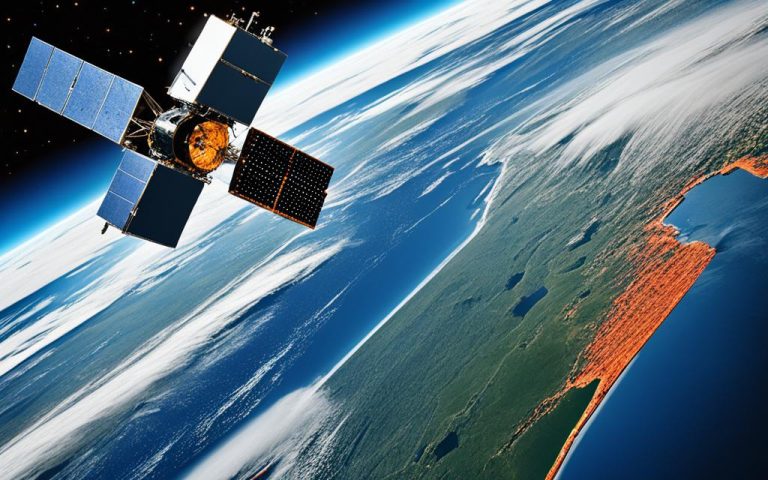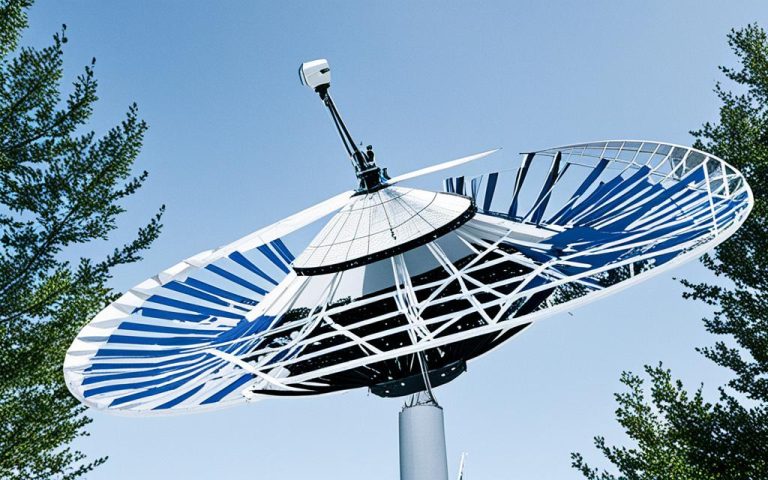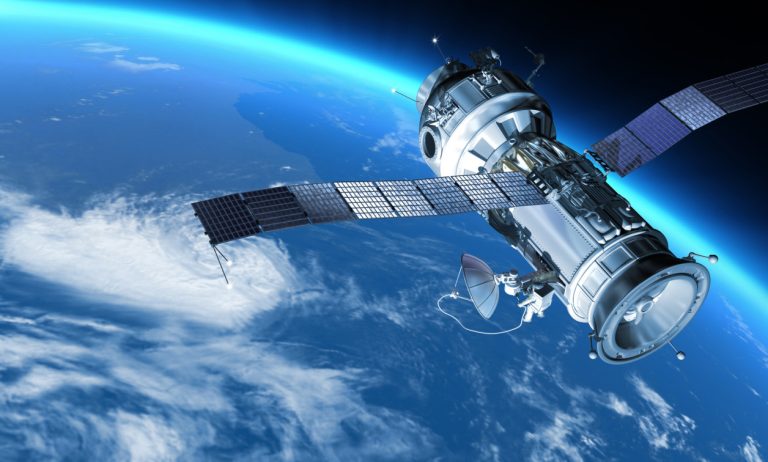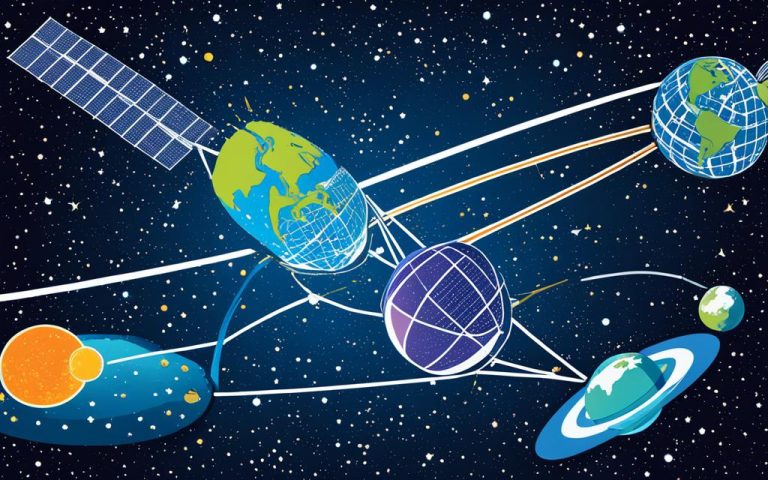Satellite networks have revolutionized air travel communication, bringing significant benefits to the aviation industry. From enhancing safety and tracking capabilities to improving in-flight Wi-Fi and entertainment options, satellite technology has transformed the passenger experience and streamlined airline operations. In this article, we will explore the impact of satellite networks on aviation communication and the advantages they bring to air travel. So, let’s dive into the world of satellite networks in aviation and discover how they have revolutionized air travel communication.
Aviation Communication
Impact of Satellite Networks
Air Travel Communication
The Advancements in In-flight Wi-Fi and Entertainment
Satellite networks have revolutionized the in-flight experience with significant advancements in Wi-Fi connectivity and entertainment options. Airlines now offer faster and more reliable in-flight Wi-Fi thanks to satellite-powered Wi-Fi systems. Passengers can enjoy seamless internet browsing, social media access, video streaming, and the ability to stay connected throughout their entire flight.
According to recent surveys, two-thirds of passengers prefer flights with Wi-Fi on board, highlighting the increasing importance of in-flight connectivity. Satellite technology has made it possible for airlines to meet passenger preferences and enhance the overall in-flight experience.
To understand the impact of satellite networks on in-flight Wi-Fi and entertainment, let’s explore some key advancements:
Enhanced Connectivity with Satellite-powered Wi-Fi Systems
Satellite-powered Wi-Fi systems have drastically improved in-flight connectivity by providing broadband speeds and a stable network connection. These systems utilize satellite networks to deliver high-speed internet access to passengers, surpassing the limitations of traditional air-to-ground systems.
By leveraging satellite networks, airlines can offer consistent connectivity throughout the flight, regardless of location or altitude. Passengers can now easily access their emails, browse the internet, connect with friends and family on social media, and even stream their favorite movies and TV shows during their journey.
Meeting Passenger Preference for In-flight Entertainment
In-flight entertainment is an essential aspect of the modern travel experience, and satellite networks have played a crucial role in enhancing these entertainment options. With improved connectivity, airlines can now offer a wide range of entertainment content, including movies, TV shows, music, and even live streaming events.
Satellite networks enable airlines to provide passengers with a seamless and diverse entertainment experience, keeping them engaged and entertained throughout their flight. Whether it’s catching up on the latest TV series or enjoying newly released movies, passengers can now enjoy an array of entertainment options at their fingertips.
| Advancements in In-flight Wi-Fi and Entertainment | Benefits |
|---|---|
| 1. Satellite-powered Wi-Fi systems | – Faster and more reliable connectivity – Broadband speeds for seamless browsing – Consistent network connection throughout the flight |
| 2. Wide range of in-flight entertainment options | – Diverse selection of movies, TV shows, and music – Live streaming events – Accessible on personal devices |
As passenger preferences continue to evolve, airlines must keep up with the demand for in-flight Wi-Fi and entertainment. The advancements in satellite technology have made it possible for passengers to enjoy a connected and engaging flight experience, ultimately improving customer satisfaction and loyalty.
“Satellite networks have paved the way for enhanced in-flight connectivity, allowing passengers to stay connected and entertained throughout their journey.” – Aviation Industry Expert
Enhanced Safety and Tracking Capabilities
Satellite networks have played a crucial role in enhancing safety and tracking capabilities in the aviation industry. While traditional radar-based tracking systems are limited to coverage over land, satellite technology has enabled global coverage for aircraft tracking, even over remote areas and vast oceans.
Automatic Dependent Surveillance-Broadcast (ADS-B), a system widely used in aviation, utilizes satellite networks to transmit real-time information about an aircraft’s position, altitude, and speed. By leveraging satellite networks, ADS-B signals can now be received and tracked over the oceans, providing more accurate and efficient tracking of aircraft.
![]()
In addition to traditional ADS-B, satellite detection of ADS-B is being implemented to further enhance tracking capabilities. This technology allows for the real-time detection and monitoring of ADS-B signals through satellite systems, improving flight monitoring and overall aviation safety.
“Satellite networks have revolutionized aircraft tracking, enabling global coverage and more efficient tracking of aircraft.” – Aviation Safety Expert
With the integration of satellite networks into aviation communication systems, the industry has witnessed a significant improvement in tracking capabilities, ensuring safer and more reliable air travel.
| Benefits of Enhanced Tracking Capabilities | Features |
|---|---|
| Improved Flight Monitoring | Real-time tracking of aircraft allows for better flight monitoring, enabling prompt response to emergencies or deviations. |
| Enhanced Search and Rescue Operations | Accurate and global aircraft tracking facilitates faster and more efficient search and rescue missions in case of emergencies or accidents. |
| Prevention of Airspace Violations | Comprehensive tracking capabilities help prevent unauthorized entry or violations of restricted airspace, enhancing aviation security. |
| Efficient Air Traffic Management | Accurate and real-time tracking of aircraft improves overall air traffic management and ensures smoother operations. |
Table: Benefits of Enhanced Tracking Capabilities
Improving Air Traffic Management and Operations
Satellite networks play a crucial role in improving air traffic management and operations. As air travel continues to grow, traditional ground-based air traffic control systems face limitations in managing the increasing traffic volume. However, new concepts such as Distributed Air/Ground Traffic Management (DAG-TM) aim to revolutionize air traffic control by integrating collaborative environments where aircraft, air traffic service providers, and airline operations centers can work together in real-time.
Satellite networks provide the necessary infrastructure for seamless communication and data sharing between these entities, enabling more efficient routing, improved traffic flow management, and reduced delays. The development of technologies like NextGen in the United States and similar systems in Europe further enhance the capabilities of air traffic management through satellite communications.
Benefits of Satellite Networks in Air Traffic Management:
- Improved collaboration between aircraft, air traffic service providers, and airline operations centers
- Real-time data sharing for more efficient routing
- Enhanced traffic flow management
- Reduced delays and improved flight efficiency
- Increased safety through enhanced situational awareness
By leveraging satellite networks, air traffic management can overcome the limitations of traditional ground-based systems and embrace collaborative approaches that optimize the flow of air traffic. This not only improves operational efficiency but also enhances safety and passenger experience in the aviation industry.
| Traditional Air Traffic Management | Satellite-Enabled Air Traffic Management |
|---|---|
| Relying solely on ground-based radar systems | Integrating satellite communication for global coverage |
| Limited routing options | More efficient routing with real-time data sharing |
| Less precise tracking over remote areas and oceans | Enhanced tracking capabilities through satellite detection of ADS-B |
| Higher risks of congestion and delays | Reduced delays and improved traffic flow management |
With satellite networks, air traffic management can evolve to meet the demands of a growing aviation industry. Collaborative environments and advanced technologies enable more effective management of air traffic, ensuring safe and efficient operations for airlines, air traffic service providers, and passengers alike.
The Role of Satellite Networks in GPS Navigation
Satellite networks play a crucial role in the functionality of the Global Positioning System (GPS) for navigation in aviation. The GPS system utilizes a network of satellites to provide accurate positioning, speed, and timing information to aircraft and other users.
These satellites transmit signals that can be received by GPS receivers on board aircraft, allowing for precise navigation and location determination. Satellite networks ensure the widespread availability of GPS navigation, enabling pilots to navigate safely and accurately, particularly in remote areas and during oceanic flights.
“Satellite networks are indispensable in enabling the functionality of GPS navigation in aviation. These networks ensure the transmission of accurate positioning, speed, and timing information to aircraft, enabling pilots to navigate safely, especially in remote and oceanic areas.” – Expert in GPS Navigation Systems
Satellite Communication Process and Protocols
Satellite communication is a critical component of aviation that enables seamless communication between aircraft and ground stations. Communication satellites act as relay stations in space, facilitating the transmission of signals between the aircraft and ground-based communication systems.
One of the key elements of aircraft communication systems is the transponder. Transponders receive and process signals, allowing for voice and data exchange between the aircraft and ground stations. These transponders play a crucial role in maintaining effective communication throughout the flight.
Aircraft communication systems operate on designated radio frequency bands, each offering different communication capabilities. The commonly used bands in satellite communication are:
- C-Band: This band uses radio frequencies between 4 and 8 GHz. It is suitable for long-distance communication and offers robust performance in adverse weather conditions.
- Ku-Band: Operating in the frequency range of 12 to 18 GHz, the Ku-Band provides higher data transfer rates and is widely used for broadband internet connectivity in aviation.
- Ka-Band: Utilizing frequencies between 26.5 and 40 GHz, the Ka-Band offers even higher data transfer rates, making it ideal for bandwidth-intensive applications and high-speed internet access.
By leveraging satellite protocols and communication bands, aviation stakeholders ensure the efficient and reliable exchange of information between aircraft and ground stations, enabling effective communication and enhancing overall flight operations.
Comparison of Communication Bands in Satellite Communication
| Communication Band | Frequency Range | Key Features |
|---|---|---|
| C-Band | 4 – 8 GHz | Long-distance communication, robust performance in adverse weather conditions |
| Ku-Band | 12 – 18 GHz | Higher data transfer rates, widely used for broadband internet connectivity |
| Ka-Band | 26.5 – 40 GHz | Even higher data transfer rates, ideal for bandwidth-intensive applications |
The Advantages of Satellite Communication in Different Aviation Sectors
Satellite communication brings numerous advantages to different sectors within the aviation industry. In commercial aviation, satellite communication systems provide passengers with connectivity similar to that on the ground, enabling web browsing, media streaming, and other online activities. This ensures a seamless and enjoyable travel experience for passengers, allowing them to stay connected and entertained throughout their journey.
In business aviation, satellite communication plays a vital role in enhancing connectivity. Business travelers rely on efficient communication and data transfer capabilities to stay productive while in the air. With satellite communication, business aviation enables features like video conferencing, large file transfers, and real-time collaboration, facilitating effective communication and enhancing productivity.
For helicopters and light aircraft, satellite communication is critical for flight safety, weather updates, and general communication needs. These aircraft often operate in remote areas with limited ground-based infrastructure. Satellite communication systems provide reliable and continuous connectivity, enabling pilots to access critical information, communicate with ground control, and receive real-time weather updates, ensuring a safe and efficient flight.
Additionally, satellite networks support in-flight entertainment systems, providing passengers with a wide range of entertainment options during their flights. Whether it’s watching movies, listening to music, or playing interactive games, in-flight entertainment systems powered by satellite networks enhance the overall travel experience and add to passenger satisfaction.
Overall, satellite communication has revolutionized the aviation industry, offering enhanced connectivity, improved safety, and a seamless passenger experience across commercial aviation, business aviation, and helicopters/light aircraft. It has become an essential component in the modern aviation landscape, driving advancements and innovation within the industry.
Table: Comparison of Satellite Communication Advantages in Different Aviation Sectors
| Aviation Sector | Advantages of Satellite Communication |
|---|---|
| Commercial Aviation | 1. Seamless connectivity for web browsing and media streaming 2. Enhanced in-flight entertainment options 3. Increased passenger satisfaction |
| Business Aviation | 1. Video conferencing capabilities 2. Large file transfers for efficient communication 3. Real-time collaboration for increased productivity |
| Helicopters and Light Aircraft | 1. Critical flight safety communications 2. Weather updates for precise flight planning 3. Reliable general communication capabilities |
Conclusion
Satellite networks have revolutionized aviation communication, bringing about significant advancements in connectivity, safety, and operational efficiency. With the integration of satellite-powered Wi-Fi and entertainment systems, passengers now enjoy faster and more reliable connectivity, making their in-flight experience more enjoyable and productive. Moreover, satellite technology has expanded tracking capabilities, providing global coverage and ensuring the safe monitoring of aircraft, even in remote areas and over the oceans.
Looking ahead, satellite networks will continue to play a crucial role in the future of aviation communication. As technology advances, we can expect further improvements in connectivity, safety, and efficiency. The seamless integration of satellite networks into aviation infrastructure will pave the way for a more connected and efficient air travel experience for passengers worldwide.
By embracing satellite networks, the aviation industry is poised for a future where connectivity becomes ubiquitous, safety is enhanced, and operational efficiency is optimized. As we move forward, the collaboration between satellite providers and aviation stakeholders will fuel innovation and drive the development of new technologies and solutions that will shape the future of aviation communication.
FAQ
How have satellite networks improved in-flight Wi-Fi and entertainment?
Satellite networks have revolutionized in-flight Wi-Fi and entertainment by enabling faster and more reliable connectivity on board. Passengers now have the ability to browse the internet, use social media, stream videos, and stay connected throughout their flight, enhancing the overall in-flight experience.
What are the safety and tracking capabilities that satellite networks provide in aviation?
Satellite networks have significantly improved safety and tracking capabilities in aviation. They enable global coverage for aircraft tracking, even over remote areas and oceans, through systems like Automatic Dependent Surveillance-Broadcast (ADS-B). This allows for more accurate and efficient tracking of aircraft, enhancing overall flight monitoring and safety.
How do satellite networks improve air traffic management and operations?
Satellite networks play a crucial role in improving air traffic management and operations. They provide seamless communication and data sharing between aircraft, air traffic service providers, and airline operations centers, enabling more efficient routing, improved traffic flow management, and reduced delays.
What is the role of satellite networks in GPS navigation for aviation?
Satellite networks are instrumental in the functionality of the Global Positioning System (GPS) for navigation in aviation. They ensure the widespread availability of GPS navigation, allowing pilots to navigate safely and accurately, particularly in remote areas and during oceanic flights.
How does satellite communication work in aviation?
Satellite communication in aviation enables seamless communication between aircraft and ground stations. Communication satellites act as relay stations in space, receiving and transmitting signals between the aircraft and ground-based communication systems. This communication is facilitated through transponders and specific radio frequency bands.
What are the advantages of satellite communication in different sectors of aviation?
Satellite communication brings numerous advantages to different sectors within the aviation industry. In commercial aviation, it provides passengers with connectivity similar to that on the ground, allowing for web browsing, media streaming, and other online activities. In business aviation, satellite communication enables enhanced connectivity, including video conferencing and large file transfers. For helicopters and light aircraft, satellite communication is critical for flight safety, weather updates, and general communication needs. Additionally, satellite networks support in-flight entertainment systems, offering passengers a wide range of entertainment options.

